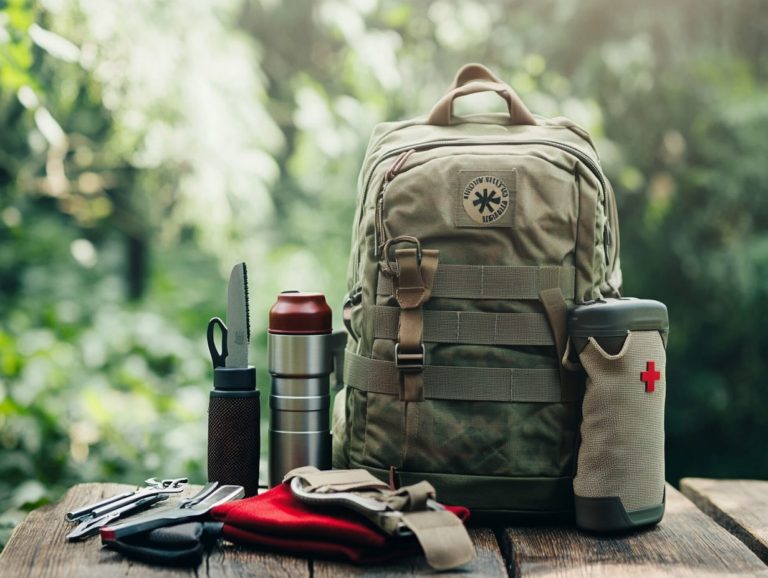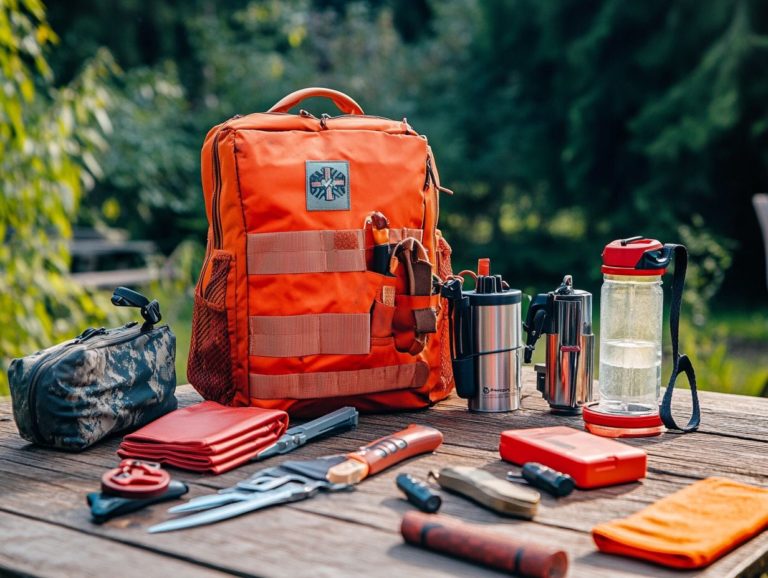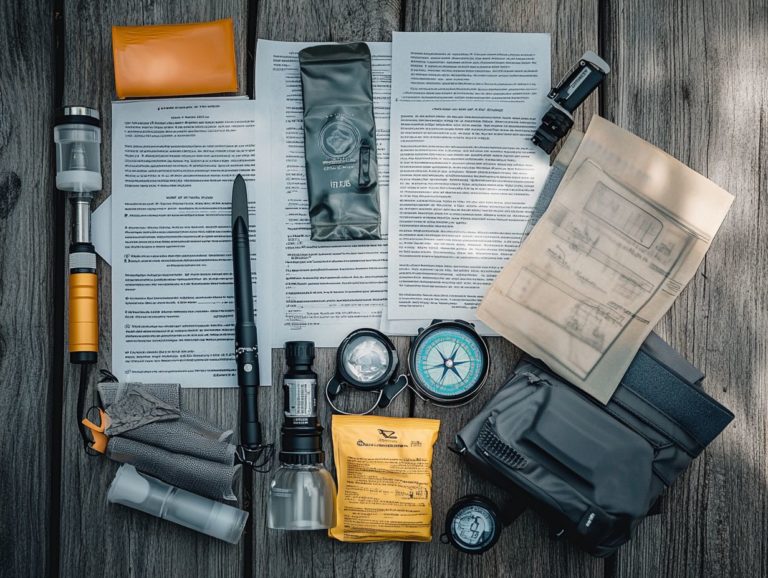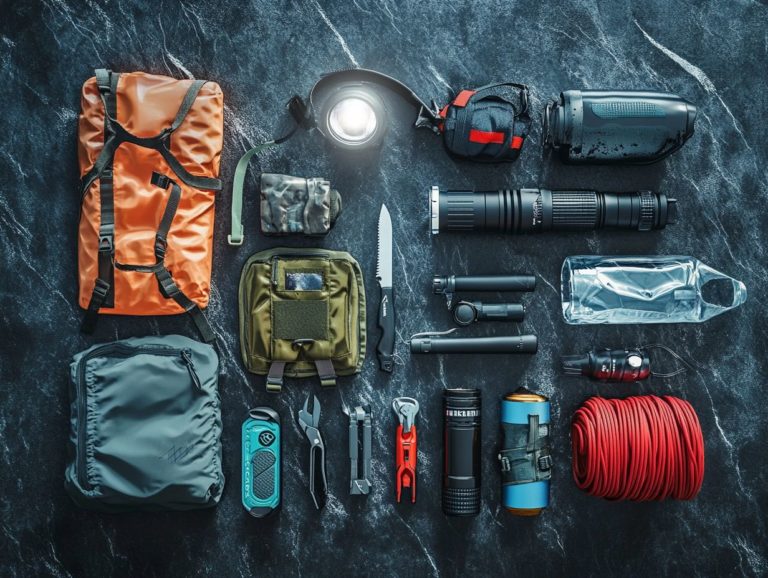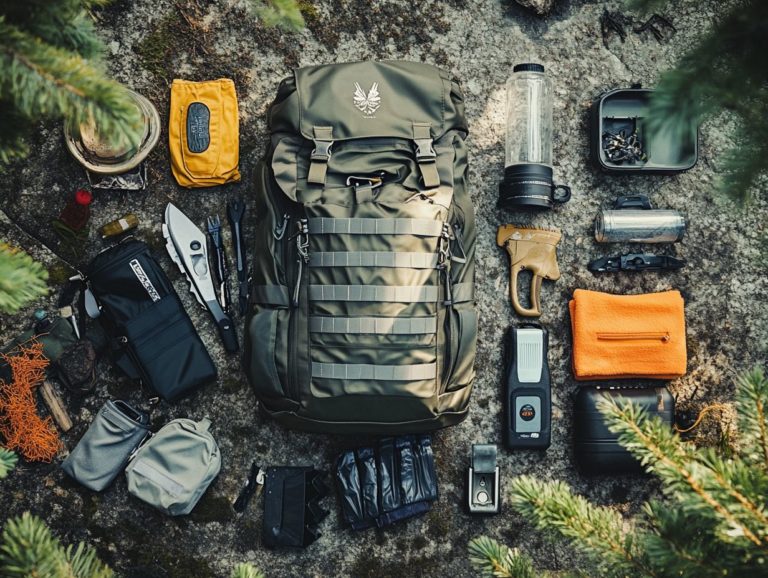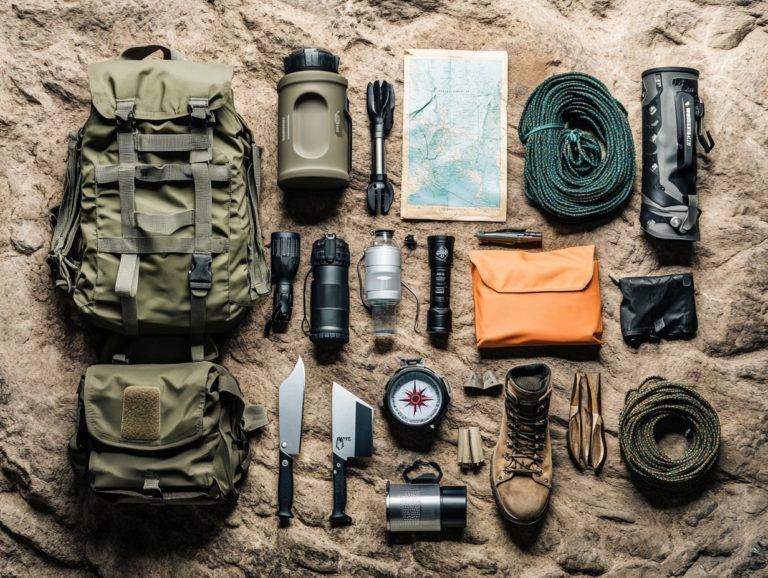Understanding Survival Gear Ratings
When it comes to outdoor adventures or preparing for emergencies, having dependable survival gear is absolutely essential.
With a plethora of options available, understanding survival gear ratings can feel overwhelming. This guide simplifies the various types of ratings such as temperature tolerance, waterproof capabilities, and durability equipping you with the knowledge to select the right gear tailored to your specific needs.
You ll learn how to interpret and compare these ratings, along with essential tips for maintaining and testing your gear to ensure it performs at its best.
Let s explore survival gear ratings together and prepare you for any situation!
Contents
- Key Takeaways:
- What are Survival Gear Ratings?
- Types of Survival Gear Ratings
- How to Choose the Right Gear for Your Needs
- Interpreting and Comparing Ratings
- Maintaining and Testing Your Gear
- Frequently Asked Questions
- What are survival gear ratings and why are they important?
- What types of survival gear are typically rated and what do the ratings mean?
- How are survival gear ratings determined?
- What should I look for when comparing survival gear ratings?
- Can I trust survival gear ratings to accurately reflect a product’s quality?
- Are there any drawbacks to relying on survival gear ratings?
Key Takeaways:
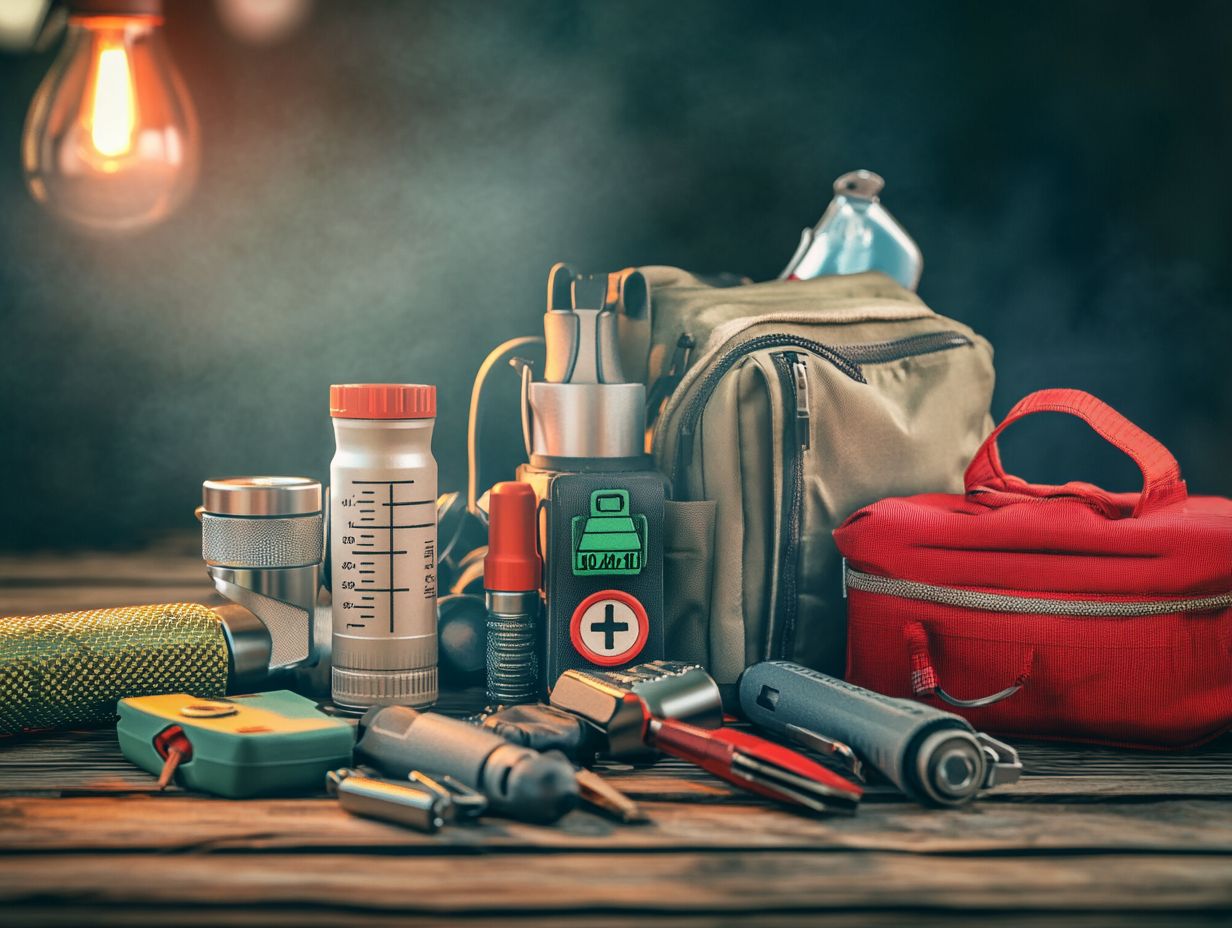
- Understand survival gear ratings temperature, waterproof, and durability to choose the right gear.
- Consider your environment and needs when comparing gear ratings.
- Maintain and test your survival gear regularly for reliability in emergencies.
What are Survival Gear Ratings?
Survival Gear Ratings are valuable tools that help outdoor enthusiasts assess gear effectiveness and reliability. They are tailored for emergency situations in the wilderness, enabling you to gauge the quality and purpose of each item, whether it s fire-making supplies, first aid supplies, or survival food.
Understanding these ratings helps you select the best survival kits available and also guides you in crafting a DIY survival kit or choosing an affordable option that perfectly aligns with your unique requirements in different environments.
Types of Survival Gear Ratings
There are several types of survival gear ratings designed to help you grasp the effectiveness of different survival kits and their components. This ensures that you select the most suitable options for any emergency situation.
These ratings provide valuable insights into the quality and practicality of each item, giving you the power to make informed decisions when it comes to choosing the right equipment and gear for your wilderness adventures.
Temperature Ratings
Temperature ratings are essential when evaluating survival gear, especially for items like sleeping bags and clothing designed for extreme conditions. These ratings reveal the lowest temperatures at which the gear can effectively keep you warm and comfortable, making them crucial for outdoor enthusiasts who encounter unpredictable weather.
By understanding these ratings, you can choose the right equipment tailored to your specific climate and activities. For example, if you re preparing for a hike in snowy mountains, prioritize gear with lower temperature ratings compared to someone camping in more temperate conditions.
These ratings are vital for safety in emergencies. Using appropriately rated gear in your survival kits not only increases your chances of withstanding freezing temperatures but also empowers you to make informed choices by understanding survival gear regulations when assembling practical survival gear suited for various environments.
Waterproof Ratings
Waterproof ratings are crucial for understanding the water resistance of your survival gear. This ensures that the items in your emergency survival kit can withstand moisture and wet conditions.
Grasping these ratings is essential for outdoor enthusiasts like you, as it helps you choose practical gear that stays effective even in rainy or submerged environments.
These ratings are typically indicated by an Ingress Protection (IP) code, which shows how well your gear can resist water. For instance, gear rated IP67 can be fully submerged in water for a limited time without sustaining damage. This makes it an ideal choice for unpredictable weather.
Waterproof bags that secure your emergency supplies are essential. They shield vital items like fire starters and first-aid kits from water damage.
Invest in high-quality emergency survival kits, especially those that include waterproof gear. This ensures you remain prepared, no matter what conditions you encounter.
Durability Ratings
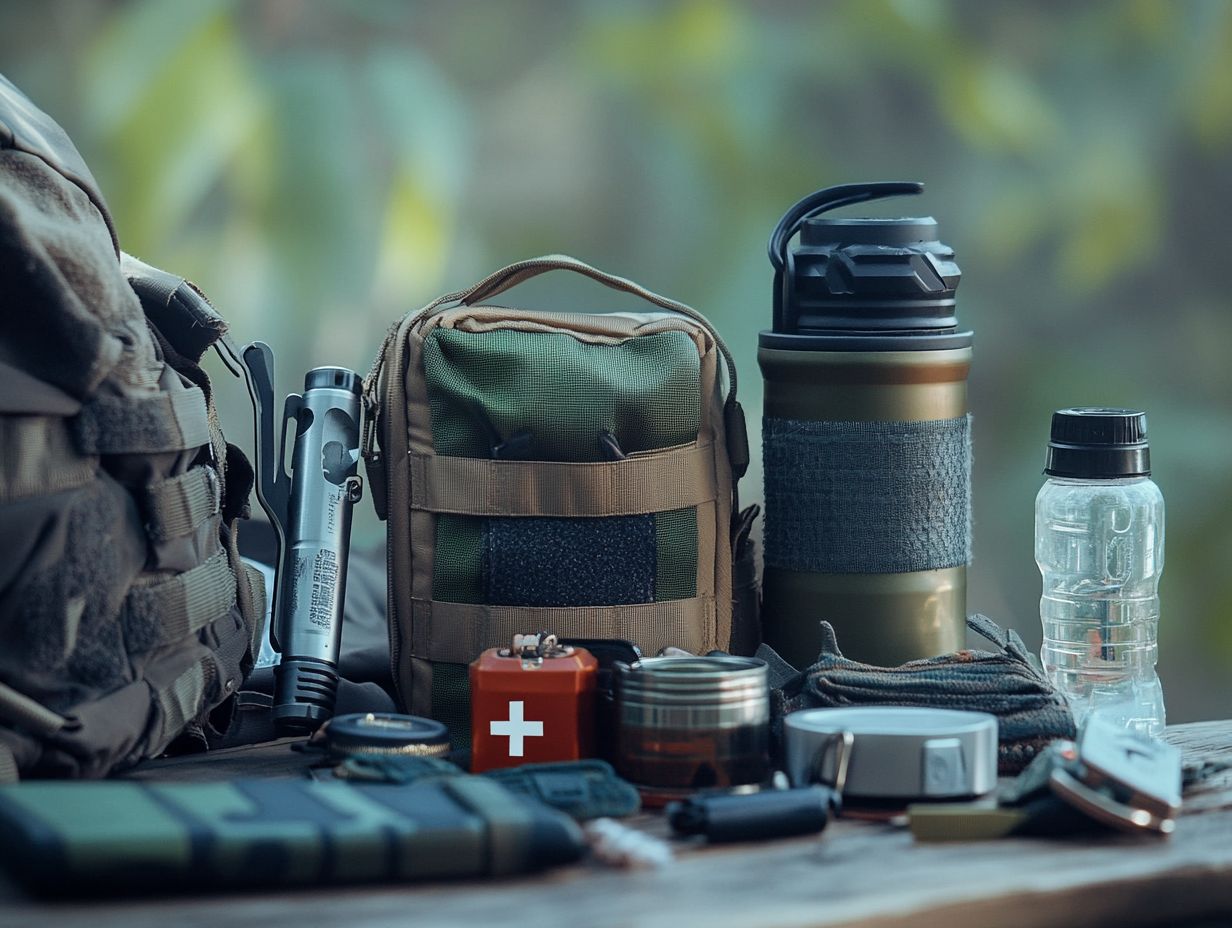
Durability ratings are essential for assessing the longevity and strength of survival gear. They offer valuable insights into how well your chosen equipment can withstand harsh conditions and repeated use.
These ratings help you select reliable components and enable informed choices when investing in survival kits tailored to your diverse wilderness needs.
Evaluating durability typically involves standardized tests that measure resistance to abrasions (wear and tear caused by friction), impacts, water exposure, and extreme temperatures.
Factors such as material quality, construction methods, and design significantly influence these ratings. High-quality fabrics or advanced polymer blends often receive higher ratings for their superior ability to resist wear and tear.
Understanding these ratings is crucial, especially for items in your emergency survival kits like tents, ropes, and tools. Their reliability can mean the difference between safety and peril in critical situations.
By prioritizing well-rated gear, you ensure you’re better prepared for the challenges that may arise in the wild.
How to Choose the Right Gear for Your Needs
Selecting the right survival gear tailored to your needs requires a nuanced understanding of your environment and specific wilderness demands. Ensure that the emergency survival kit you choose is well-suited to the conditions you may encounter.
Considerations such as climate, terrain, and your personal requirements should inform your decision-making process. These factors play a crucial role in determining which components will be most effective when you find yourself in an emergency situation.
Understanding Your Environment and Needs
Knowing your environment is the key to picking the perfect survival gear! By evaluating factors like the local climate, terrain type, and any wildlife hazards in the area, you can customize your survival kit to tackle those challenges.
For example, if you’re heading into frigid regions, include fire-making supplies to keep warm. Conversely, if you’re traversing arid landscapes, reliable water procurement tools, such as purification tablets or portable filters, are a must.
Every specific environment has its own set of potential risks, so plan accordingly. Adapting your gear will help maximize your safety and preparedness in a variety of conditions.
Interpreting and Comparing Ratings
Interpreting and comparing survival gear ratings is crucial for making informed decisions about the best emergency survival kits and their components available on the market.
By understanding how these ratings reflect the quality and effectiveness of various items, you can confidently choose practical survival gear that aligns with your specific needs and preferences.
Factors to Consider When Comparing Ratings
When you’re comparing survival gear ratings, several factors demand your attention to ensure you choose the perfect emergency survival kit for your needs. Key considerations include the specific applications of each piece of gear, user reviews, and the reliability of the ratings themselves.
All these elements come together to help you make informed decisions about practical survival gear.
Delving into the usability of items like the ESEE Knives Mini Kit can deepen your understanding. This kit is celebrated for its compact design and rugged functionality, making it a go-to choice among outdoor enthusiasts.
Evaluating the real-world performance of gear, such as the WEYLAND Emergency Survival Kit, allows you to gauge how well it stands up in various survival scenarios.
Brand reputation is another crucial aspect. Companies with a proven track record of quality often deliver more reliable and durable gear.
By weighing these factors, you can confidently select the most suitable equipment tailored to your specific needs.
Maintaining and Testing Your Gear
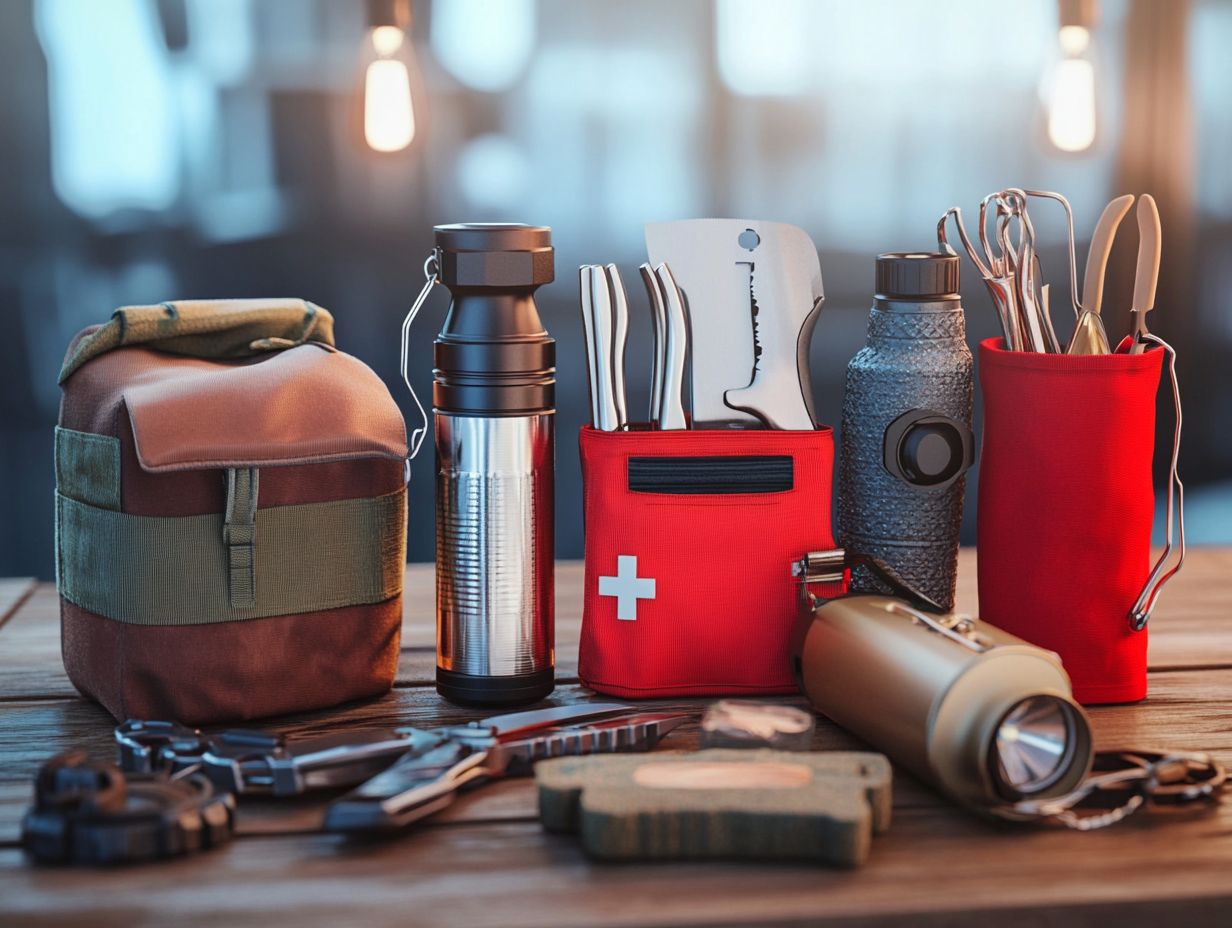
Maintaining and testing your survival gear is crucial to ensure that your emergency survival kit remains effective and dependable when you need it most. Regularly check and maintain each component.
This helps you spot potential issues and ensures your gear is ready for real-world situations.
Proper Care and Maintenance
Proper care and maintenance of your survival gear are essential for maximizing its lifespan and reliability, especially for the components in your emergency survival kits. By adhering to recommended care practices, you can ensure that your essential survival gear remains in peak condition for any unexpected situations that may arise.
Regular checks and cleaning are essential. This is particularly true for items like the Black Diamond Storm 500R headlamp.
Be sure to inspect the battery life and lens clarity periodically; after all, you want it to shine when you need it most.
Storing your gear in a dry, cool place will help protect it from environmental damage, keeping it ready for action.
The MSR PocketRocket 2 also demands your attention. After each use, it s vital to clean the stove thoroughly.
Check the fuel canister for any leaks or signs of wear. By establishing a routine of cleanliness and proper storage for all your survival items, you can rest easy knowing your gear will perform effectively when it truly counts.
Testing Your Gear for Effectiveness
Testing your survival gear for effectiveness is essential to ensure that every component of your emergency survival kit performs as expected when you need it most. Regular testing gives you the power to pinpoint issues and enhance your preparedness for various wilderness scenarios.
To ensure reliability, adopt practical techniques for evaluating each item. For instance, practice fire-making with different supplies like matchsticks, magnesium strips, or flint to find what works best for you.
Conduct taste tests on various survival food options to discover which ones are not only nutritious but also palatable. This helps you make better choices when it truly counts.
Establishing a systematic testing schedule perhaps monthly can keep all your gear in optimal condition. It also boosts your confidence in using it during high-stress situations.
By incorporating these strategies, you’ll feel empowered knowing you re well-equipped to navigate unexpected challenges.
Frequently Asked Questions
What are survival gear ratings and why are they important?
Survival gear ratings are standardized measures used to evaluate the quality, durability, and performance of survival gear. They provide consumers with a reliable way to compare different products and make informed purchasing decisions.
What types of survival gear are typically rated and what do the ratings mean?
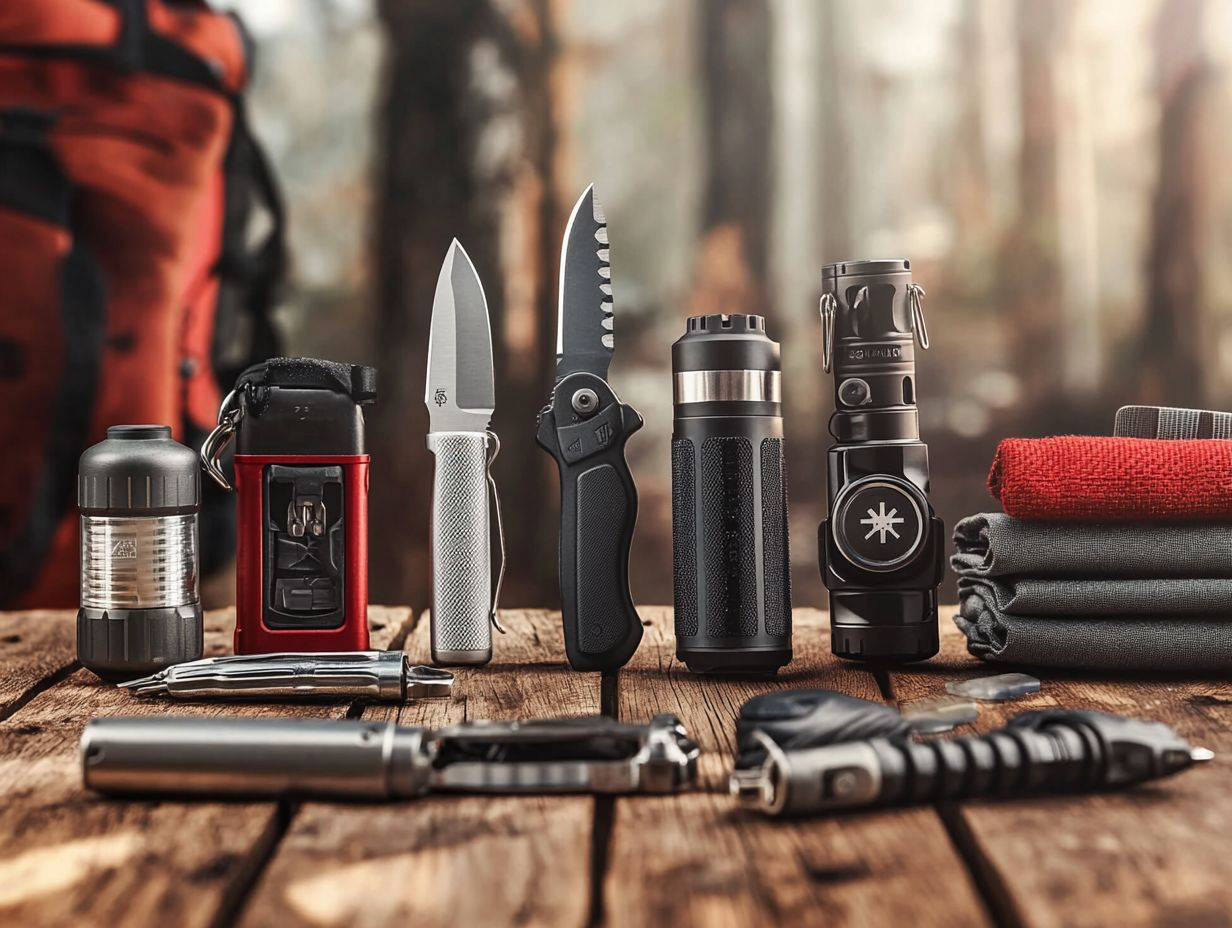
The most commonly rated survival gear includes backpacks, tents, sleeping bags, and stoves. Ratings usually indicate the gear’s water resistance, durability, weight, and temperature resistance.
This ensures it can withstand harsh environments and situations.
Don t wait to test your gear! Regular evaluation can make a significant difference in your preparedness.
Explore more tips on maintaining and choosing the right survival gear, and subscribe for updates on the latest in outdoor safety!
How are survival gear ratings determined?
Ratings are determined through rigorous tests by independent organizations or manufacturers. These tests measure performance in water resistance, durability, and temperature resistance.
What should I look for when comparing survival gear ratings?
When comparing ratings, focus on the features that matter most for your survival needs. If camping in cold weather, check how well a sleeping bag or tent can handle low temperatures.
Can I trust survival gear ratings to accurately reflect a product’s quality?
While ratings are helpful, it’s crucial to check product reviews and the brand’s reputation. Dive deep into your research to ensure you make the best purchase decision.
Are there any drawbacks to relying on survival gear ratings?
Ratings may not always show how a product performs in real-life situations. A high rating doesn t guarantee that the product will meet your expectations. Always check reviews before buying!

